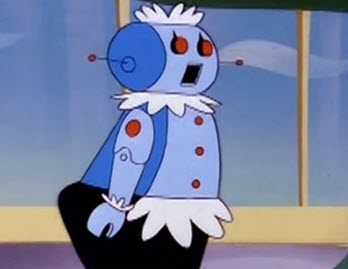IoT Raising Liability, Governance, Convergence Challenges

Internet of Things applications are generating a greater recognition of cross-industry involvement and the need for creative approaches to handle intricate connections, according to speakers at a Washington conference on online safety.
Rebecca Arbogast, senior vice president-Global Public Policy at Comcast NBCUniversal, questioned whether "overarching best practices" policies are possible in an ecosystem that involves IoT services for fixed and mobile platforms and for a wide array of applications from healthcare to vehicle control. She also acknowledged that most services depend on network delivery, "which means your network operator" is likely to be involved in the IoT oversight policies.
Arbogast moderated a panel discussion of "Privacy, Ethics and the Internet of Things," which generated volatile terms that augur the array of issues facing IoT ventures. The IoT examination was part of the Family Online Safety Institute's annual conference on Nov. 16; this year's event focused on "Trust & Civility in a Challenging World."
One approach to handling IoT policy would be based on "soft law," which Adam Thierer, senior research fellow at the Mercatus Center at George Mason University, characterized as "informal codes of conduct" and a "messy type of governance" in a fast-evolving world. Thierer also cited the "pacing problem," since IoT services are rolling out on different schedules, which makes regulatory integration even more difficult.
"Liability" is another vital term in IoT -- and it's "a word that people don't like to hear," said Chris Calabrese, vice president for policy at the Center for Democracy and Technology, who uttered the term. "We may have to revisit assumptions" about liability in the IoT environment, he added. Citing classic certification systems, Calabrese insisted that with IoT, "you are not certifying a product; you're certifying a process," which includes everything on a network.
Calabrese contended that security itself is a process, which means that IoT requires customers to "buy a relationship, not just a product." Such arrangements could involve long-term liabilities for every entity in the process, he indicated, adding that it "helps us think about infrastructure."
Comcast's Arbogast cited another example of IoT's role in vocabulary building.
"Kid Finder" is a term coined by a Comcast engineer for the company's "controlled WiFi" service, which enables parents (or others) to turn off the home WiFi system selectively, such as at dinnertime. As soon as signal disappears, family members emerge from wherever they were hiding to find out what happened, Arbogast explained -- hence, the "kid finder" role.
What Would the Jetsons Do?
The panel session, subtitled "What Would The Jetsons Do?" (which Arbogast introduced with a video clip from the once-futuristic eponymous TV cartoon show), didn't seek to identify any solutions to the looming IoT governance challenge. Although there was considerable support for private-sector self-regulation of IoT development, Calabrese pointed out that "more than a dozen entities are creating frameworks on how to develop governance." He suggested that some form of public-private collaboration will ultimately be necessary to guide the multiple standards issues.
Kristin Cohen, senior attorney at the Federal Trade Commission, acknowledged that IoT is broader than most policymaking actions that the FTC faces because there are "so many devices that can track you." She also cited the unprecedented array of physical safety factors, ranging from IoT dispensing of medication (which had been approved by the Food & Drug Administration a few days earlier) to vehicle controls.
That raised the challenge of how to balance "breathing room for innovation" while providing safety for consumers.
Hilary Cain, director of technology and innovation policy at Toyota, observed that the "risk calculus" is different for various IoT applications. She said that some days she sees the values of integrating all the guidelines, but on other days, she recognizes the need for separate approaches to each IoT process.
"There is no one size fits all," Cain concluded.
(Image: Rosie the Robot, from "The Jetsons," Hanna Barbera/YouTube)
Multichannel Newsletter
The smarter way to stay on top of the multichannel video marketplace. Sign up below.
Contributor Gary Arlen is known for his insights into the convergence of media, telecom, content and technology. Gary was founder/editor/publisher of Interactivity Report, TeleServices Report and other influential newsletters; he was the longtime “curmudgeon” columnist for Multichannel News as well as a regular contributor to AdMap, Washington Technology and Telecommunications Reports. He writes regularly about trends and media/marketing for the Consumer Technology Association's i3 magazine plus several blogs. Gary has taught media-focused courses on the adjunct faculties at George Mason University and American University and has guest-lectured at MIT, Harvard, UCLA, University of Southern California and Northwestern University and at countless media, marketing and technology industry events. As President of Arlen Communications LLC, he has provided analyses about the development of applications and services for entertainment, marketing and e-commerce.



